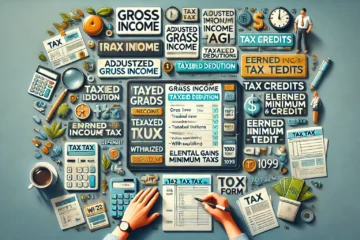What does annual percentage rate (APR) mean? It represents the yearly rate charged for a loan, like a credit card. When you apply for a credit card, you’ll see a section called the Schumer Box, which outlines key terms and details about the card. The box, named after a congressman, was created to ensure transparency from lenders like credit card companies.
In this example, three APRs are shown for this sample credit card: the lowest percentage is for those with really good credit and the highest percentage for those with poorer credit.
Now, let’s say you carry a $1,000 balance on your credit card and you get a 25% APR rate. To figure out what interest you would be charged, follow these steps:
Divide the APR by 365 days because APR is actually compounded daily!
25% / 365 days = .00068
Now calculate the daily interest amount.
Multiply the daily interest rate by the carried balance:
$1,000 x .00068 = 68 cents
This may not seem like a lot of money, but every day you carry a balance, you use that amount and multiply it by the daily interest rate to get the new amount owed.
In a month, the compound interest amount is $1,020.83, so in 1 month you already owe $20.83 of interest.
If you only make the minimum payment it will take you 5 years to pay off the debt.
Final Thoughts: Try to Avoid Carrying a Balance
Understanding APR and how it compounds daily is crucial to managing credit card debt wisely. What may seem like small interest charges can quickly add up, especially if you’re only making the minimum payments. The key takeaway? Avoid carrying a balance when possible, and always aim to pay off your credit card in full each month. Doing so will help you avoid the long-term costs of compounding interest, which can make even small purchases far more expensive over time.



2 Comments
The Challenge of Compound Interest When Borrowing - Dyneri · September 11, 2024 at 9:44 pm
Next, check the fine print of your credit card to look up how interest you will be charged. This is called Annual Percentage Rate (APR). A longer post on APR is located here.
5 Key Tips for Managing Your First Credit Card - Dyneri · November 23, 2024 at 7:48 pm
Your APR (Annual Percentage Rate) is the interest rate you’ll pay on balances you carry over month to month. Some cards offer a low introductory APR, but once that ends, the regular rate kicks in.